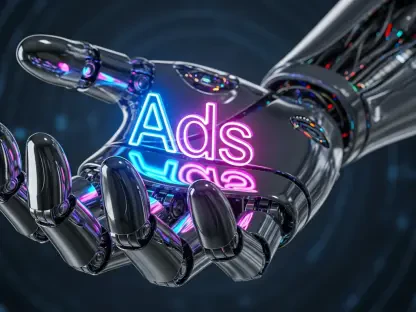Diving into the evolving world of digital marketing, I’m thrilled to chat with Anastasia Braitsik, a global leader in SEO, content marketing, and data analytics. With her finger on the pulse of the latest trends, Anastasia brings unparalleled insight into the ever-changing landscape of paid media. Today, we’re exploring Google Ads’ intriguing experiment with social creatives for Performance Max (PMax) campaigns, diving into how cross-platform integration is reshaping advertising, the role of automation, and the implications for marketers. Let’s unpack what this means for the future of digital advertising.
Can you walk us through what Google Ads is testing with Performance Max campaigns and how it involves pulling video assets from platforms like X?
Absolutely, Max. Google Ads is running an experiment where video assets from advertisers’ accounts on other platforms, like X, are showing up in the “Suggested” section for creatives in PMax campaigns. Essentially, these videos are automatically uploaded to a YouTube channel linked to the advertiser’s Google Ads account. It’s a way to streamline the process of repurposing content that’s already out there, making it easier to integrate into Google’s ecosystem for broader reach.
How are advertisers feeling about their X ad videos being automatically uploaded to a YouTube channel without their direct approval?
There’s a mixed bag of reactions. Some advertisers are intrigued by the convenience, as it cuts down on manual uploads and setup time. However, others are uneasy about the lack of direct control. The fact that this happens automatically raises concerns about whether they’re fully aware of or prepared for their content to be repurposed in this way. It’s a bit of a wake-up call for marketers to double-check their account settings and permissions.
What steps is Google taking to ensure advertisers are comfortable with this kind of integration?
Google is trying to address these concerns by including prompts for advertisers to confirm they have the legal rights to use and share these videos in their Google Ads campaigns. They’re also providing transparency messages about where the data comes from, which helps build some trust. But honestly, it’s still early days, and I think Google will need to refine how they communicate and offer opt-in or opt-out options to make advertisers feel more in control.
Speaking of transparency, Google mentioned that a third-party provider called Pathmatics is involved in sourcing these videos. Can you explain who they are and what role they play?
Pathmatics, which is part of Sensor Tower, is a data intelligence company that specializes in tracking and analyzing advertising across platforms. In this case, they’re helping Google source video assets from social ad platforms like X by pulling data on what’s running and performing well. Their involvement means Google can tap into a broader pool of creatives without building that tracking capability in-house, but it also introduces a layer of complexity regarding data privacy and ownership.
How does Pathmatics’ role impact advertisers’ trust in this process?
It’s a double-edged sword. On one hand, Pathmatics brings expertise in ad intelligence, which can reassure advertisers that the data is accurate and relevant. On the other hand, having a third party involved can make some marketers wary about how their data is being accessed and used. Trust really depends on how transparent Google and Pathmatics are about the process and whether advertisers feel their privacy and control are being respected.
Google Ads Liaison Ginny Marvin highlighted that this feature helps advertisers leverage high-performing social videos in their campaigns. How does this actually benefit marketers?
It’s a huge time-saver. If you’ve got a video that’s already crushing it on X, having it suggested for a PMax campaign means you don’t have to recreate or manually upload assets. It streamlines the creative process, letting marketers focus on strategy rather than logistics. Plus, it can boost campaign performance by reusing proven content across platforms, potentially increasing reach and engagement without extra effort.
Are there any potential drawbacks to relying on these automated video suggestions for PMax campaigns?
Definitely. While automation is convenient, it can sometimes miss the mark on context or brand alignment. A video that works on X might not resonate the same way on Google’s platforms due to different audience behaviors or expectations. There’s also the risk of over-reliance on automation, where marketers might skip reviewing the suggestions and end up running content that doesn’t fit their goals. It’s a tool, not a replacement for strategic oversight.
Looking at the broader picture, how might this move toward cross-platform asset integration change the way marketers approach creative strategies?
It’s pushing marketers to think more holistically about their creative assets. Instead of siloing content for specific platforms, they’ll need to design videos and campaigns with cross-platform potential in mind. This could lead to more versatile, adaptable creatives that work across different channels. It also means budgets and planning might shift to prioritize content that can scale, rather than one-off pieces tied to a single platform.
With automation playing a bigger role through features like this, do you see that as a positive or negative trend for advertising?
It’s largely positive if handled right. Automation can free up time for marketers to focus on big-picture strategy, testing, and optimization rather than repetitive tasks. However, the downside is losing that human touch—nuance and creativity can suffer if everything is left to algorithms. The key is balance; automation should support, not dictate, a campaign’s direction. Marketers need to stay in the driver’s seat.
Google prompts advertisers to confirm they have legal rights to use these suggested videos. How does the platform ensure compliance with copyright or ownership issues?
Right now, Google relies on advertisers to self-certify that they have the rights to use the content. They display a prompt as a reminder, which is a good start, but it’s not foolproof. If there’s a dispute, Google likely falls back on its standard policies, where the advertiser bears responsibility for any copyright violations. There’s no active vetting on Google’s end, which puts the onus on marketers to be diligent.
What do you think Google’s long-term vision is with experimental features like this in Performance Max campaigns?
I believe Google is aiming to make PMax the ultimate all-in-one advertising solution, where automation and cross-platform integration are seamless. Their vision likely involves creating a system that’s not just reactive but predictive—suggesting and optimizing assets before you even ask. It’s about lowering barriers for advertisers of all sizes to run sophisticated, data-driven campaigns. If they can nail the balance between automation and control, it could redefine how we approach digital advertising.
What’s your forecast for the role of automation in digital advertising over the next few years?
I see automation becoming even more central, with AI and machine learning driving smarter, more personalized ad experiences at scale. We’ll likely see tools that not only suggest assets but also adapt them in real-time based on performance data across platforms. However, I think there’ll be a parallel push for transparency and user control as privacy concerns grow. The challenge for platforms like Google will be to innovate without overstepping, ensuring advertisers feel empowered rather than automated out of the process.









